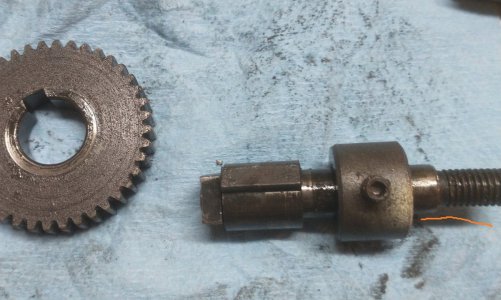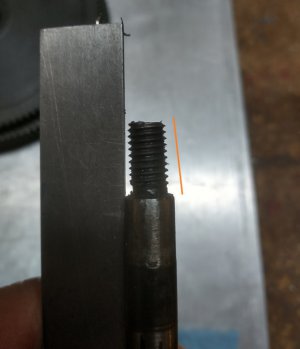- Joined
- Sep 20, 2021
- Messages
- 152
According to the chart on the front of the machine, to achieve 18 tpi I have to configure the machine like this:

a=30
b=30
Lever = 2
I don't think I have to mess with the top 40-80-40 gears - going to leave them alone. I'll start with "a" and make it 30 which will then mate to 127 idler which connects to "b" that I will set to 30 as well. According to the chart - IF I understand it correctly.
That's the initial plan anyway. Thx -
a=30
b=30
Lever = 2
I don't think I have to mess with the top 40-80-40 gears - going to leave them alone. I'll start with "a" and make it 30 which will then mate to 127 idler which connects to "b" that I will set to 30 as well. According to the chart - IF I understand it correctly.
That's the initial plan anyway. Thx -


